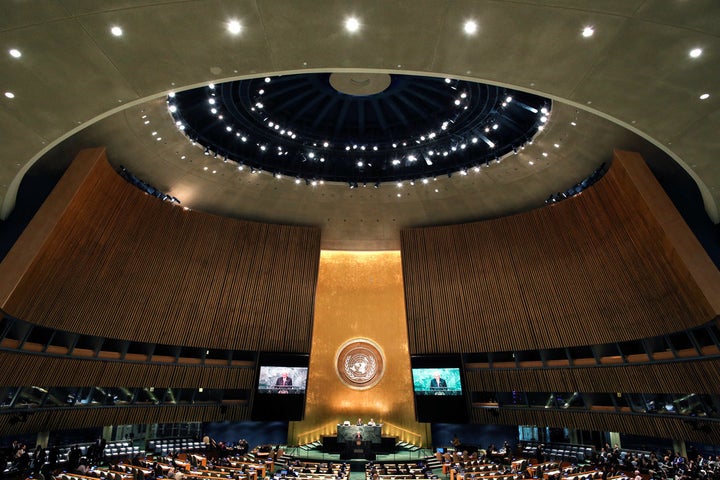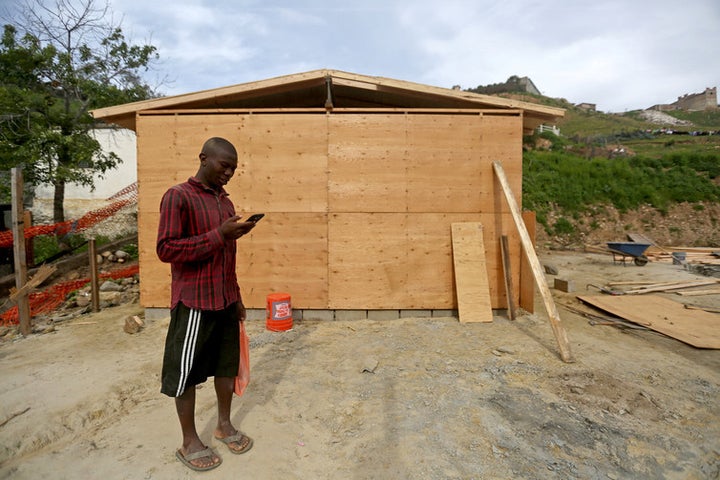
UN member states are holding consultations as part of the development of a Global Compact for Safe, Orderly and Regular Migration.
An agreement to address migrant and refugee crises worldwide, which the UN General Assembly adopted in September, has been described by many in the United Nations as nothing short of a miracle. But it also appears imperilled at times by today’s shifting and increasingly difficult political landscape.
Throughout 2017, UN member states are holding consultations on elements of international cooperation and governance of migration as part of the development of a Global Compact for Safe, Orderly and Regular Migration.
On May 22 and 23, delegates will turn their attention to the current state of knowledge and good practice on the “drivers of migration”. These include climate change, natural disasters and human-made crises.
Now is the time to dispel outdated models of human mobility in favour of a holistic, nuanced view of migration patterns and their interaction with a changing global environment and economy.
Simplifying migration drivers
International discussions often consider development aid as part and parcel of migration management. That’s because of its potential to reduce the so-called “root causes of migration”, or its drivers.
Migration professionals have been seduced by the concept of the “migration hump”. It suggests that emigration may accelerate in the short term as economic development picks up and more households gain the resources needed to migrate. But that it eventually levels off as economic opportunities enable people to remain home or to return.
This idea is used to help explain why already high migration from Mexico to the US increased slightly in the late 1990s following the signing of NAFTA, but is now a net negative flow.
If it sounds too convenient to be true, that’s because it is. A host of social factors, household ambitions and individual attributes contribute to migratory decisions. And economic migrants at times seem caricatured as overly rational actors with perfect foresight of income differentials, embodying the figurative Homo economicus derided by social scientists.

The UN is working on an agreement to address migrant and refugee crises worldwide.
No matter what its causes, migration is a legitimate way to diversify household income sources and create a buffer against future shocks. And in the context of a changing climate, mobility is particularly important for households that are dependent on resource-based livelihoods.
These are usually the very households that lack access to adequate income-generating assets, credit and trade. When the right conditions are fostered, migration brings substantial benefits for migrants and their families as well as for their communities of origin and of destination.
Remittances and development
To develop resilient communities, low-skill and low-income families cannot be left in the dust. A new comparative study adds a significant building block to the expanding body of research on how migration serves among household strategies for adapting to changing environments.
Through empirical research in six countries – Dominican Republic, Haiti, Kenya, Mauritius, Papua New Guinea and Vietnam – the study confirms that migration from risky environments is win-win-win.
Despite important variations across the six countries, funds sent by family members abroad are an important source of income.
Households in the lowest 20% of income earnings were the most reliant on remittances. These are also among households demonstrating the lowest levels of education, land ownership, and access to formal credit. The capacity to invest in a family member to migrate, then, is significant. And the dividends can be immense.
Households that receive remittances have higher incomes in the medium to long term. That’s because the funds they receive boost their ability to move beyond basic consumption and invest in structural improvements as well as income-generating assets.
Remittances were used for long-term resilience-building efforts, such as improving housing, education and health care. When households can meet their basic needs for food and shelter, their ability to invest improves.

The value of remittances from Haitians abroad quadrupled between 1999 and 2013.
Migrant diaspora clearly provide a safety net for their home communities, particularly in the wake of natural disasters. In Haiti, the value of remittances from Haitians abroad quadrupled between 1999 and 2013, from US$422 million to over US$1.78 billion. And it surged by 20% following the 2010 earthquake, yielding an extra US$360 million.
Migrants can also effectively pass on the skills and knowledge they acquired while away (social remittances), to help improve households and communities in their home countries.
In the study, at least two out of five migrant households surveyed reported learning new skills; in the case of Vietnam, the figure was as high as 82%. Migrant households’ reported ability to apply new skills upon return was 45% in Haiti, more than 70% in Kenya, and more than 80% in the rest of the countries surveyed.
Raising all boats
Remittance flows to developing countries have declined for two years in a row for the first time in history. This represents a potential loss of about US$29.8 billion (estimated remittances totalled $429 billion in 2016, compared to $429.8 billion in 2015 and $444.3 billion in 2014).
A World Bank report suggests the perception of rising xenophobia or xenophobic attitudes and policies discouraging migration are partially to blame.
This is significant as remittance flows have historically been resistant to significant decline even in times of global economic downturn. We saw this most recently after the 2008 financial crisis when remittances dipped slightly (6%) for a year and then rebounded in 2010-11.
In fact, remittances have stably dwarfed official development aid by a factor of three over two decades.
Remittances are used to care for sick or elderly family members, to bolster communities following crises, and for capital investments. They are a robust source of economic development. In our globalised world, development in these countries spurs the economic machinery that raises the standard of living in developed countries, too.

The value of remittances from Haitians abroad quadrupled between 1999 and 2013.
The effects of climate change – increased intensity and frequency of extreme weather, significant warming in some hotspots and extreme temperatures, rising sea level, more erratic and unpredictable rain patterns, among other things – will influence the scale, duration, location and distance of pre-existing migration patterns.
Families affected by environment-related shocks have a difficult time regaining their footing – and become more vulnerable with each successive hazard.
The findings outlined above reinforce the importance of migration for low-income and less-skilled households. Migrants respond to labour shortages, often putting themselves in risky situations.
But countries such as Canada, Australia and the United States are exploring ways to reduce their imports of migrants to only the most qualified applicants, developing points-based calculators. While the merits of defining a “desirable” migrant in economic terms are questionable at best, states retain the sovereign right to set migration quotas.
Unfortunately, this approach has the potential to reinforce inequality and undermine the positive outcomes of migration worldwide.
As UN states develop a global compact on migration in 2017, there should be less of a focus on reducing complex migration phenomena to their “root causes” and more on the potential of migration as a win-win.
In a changing global environment, migration can be a greater-than-ever contributor to development for communities of origin, destination areas, and for the migrants themselves.
The complexity and wide spectrum of migration – both the highly skilled expat and the less-skilled migrant – should remain a part of these discussions, with a focus on harnessing the power of migration to fuel development and reduce global inequality.
Julia Blocher, Research Officer, United Nations University
This article was originally published on The Conversation. Read the original article.
